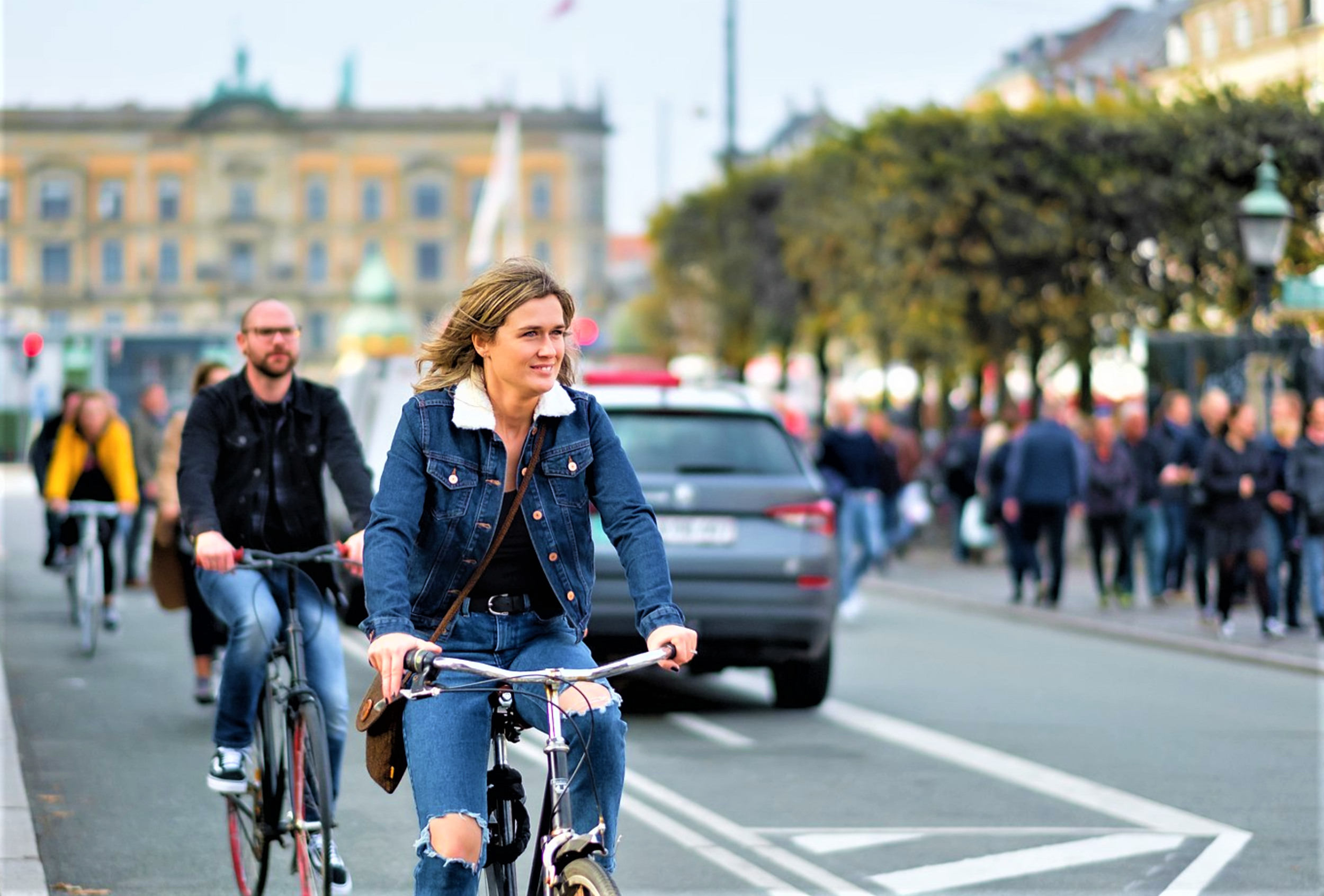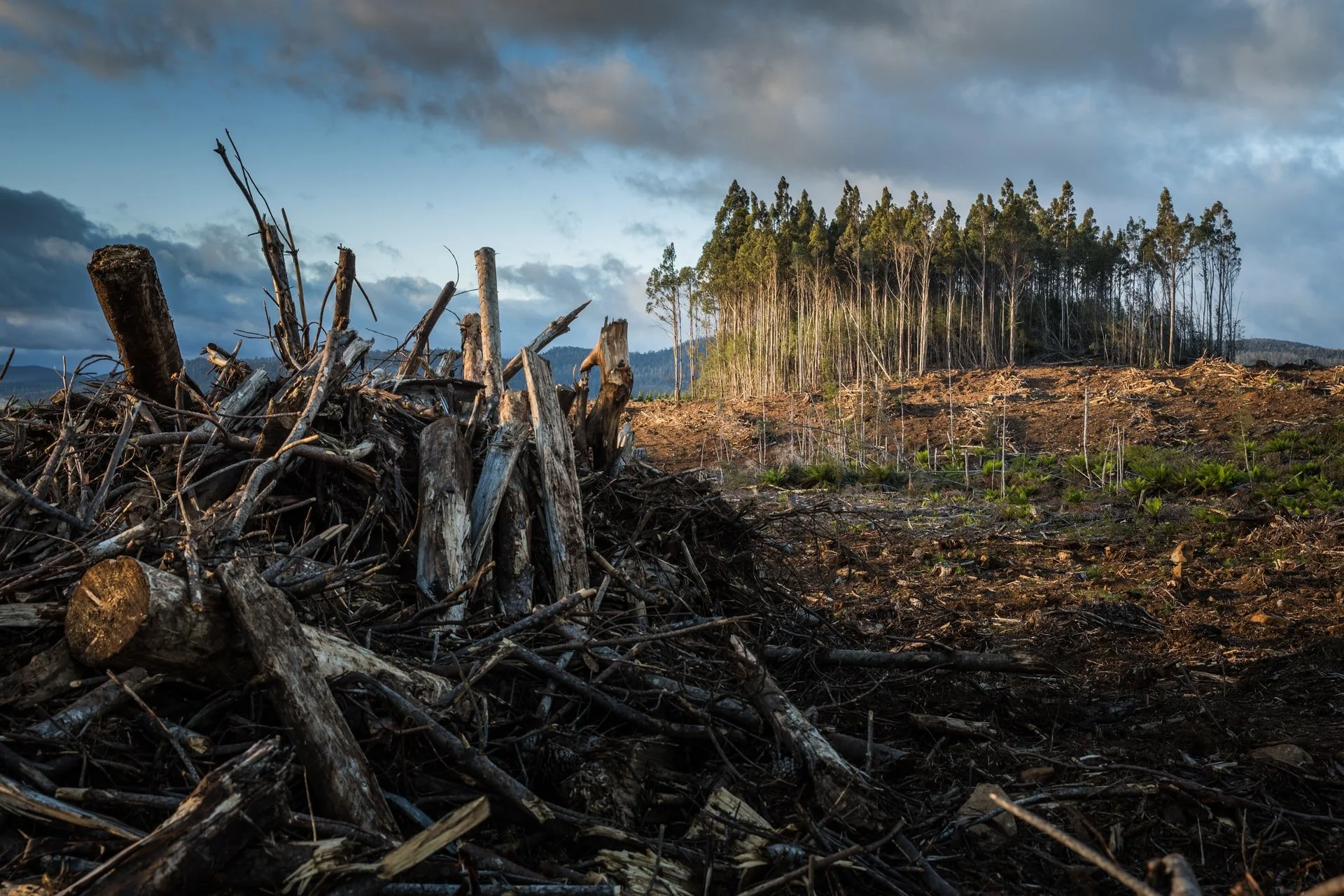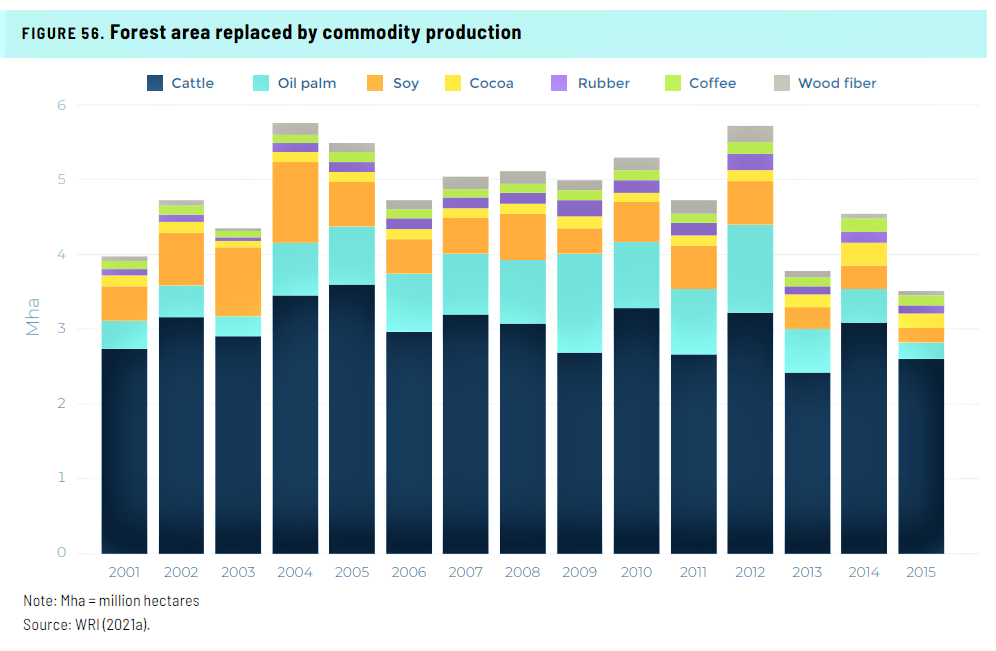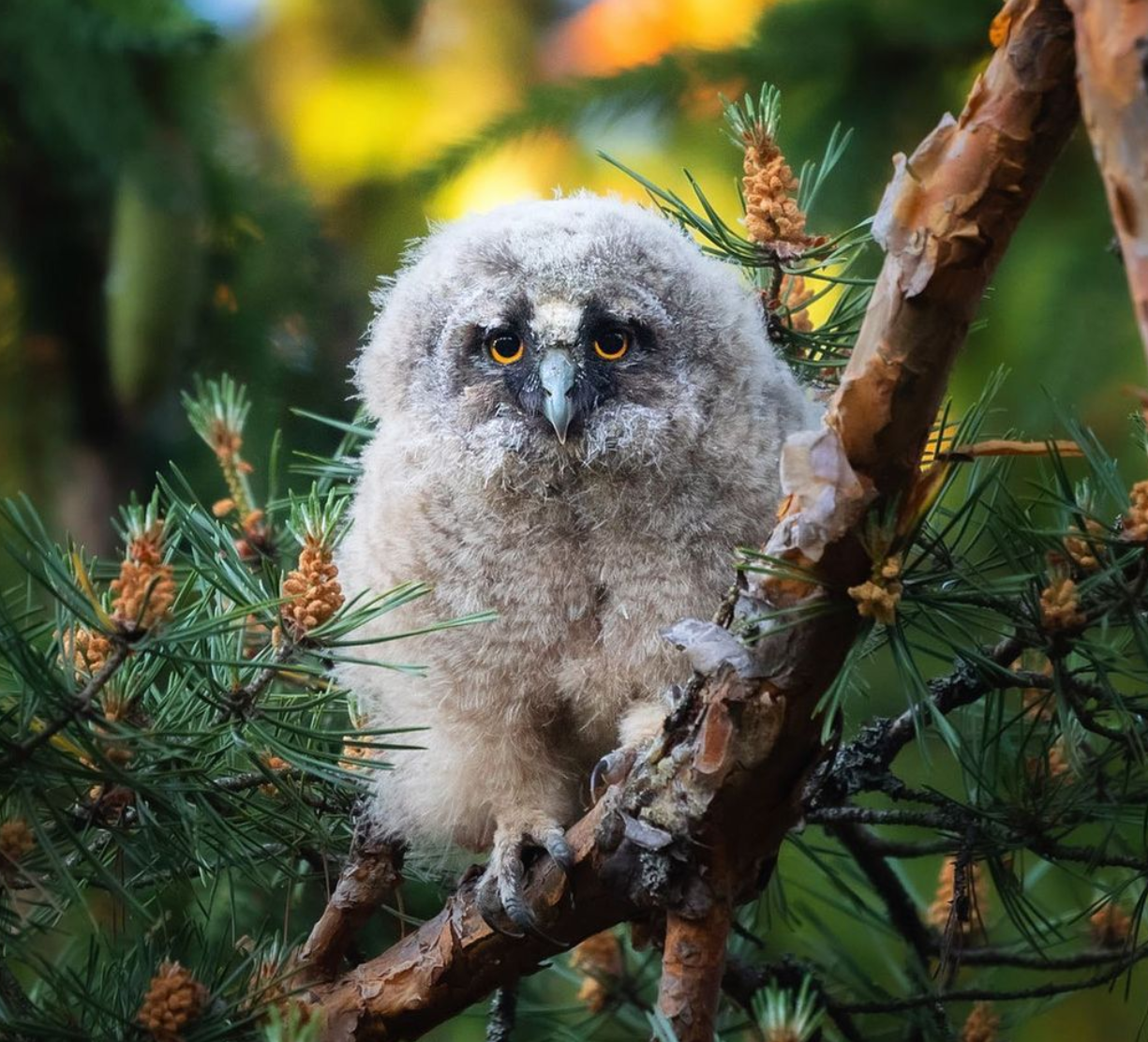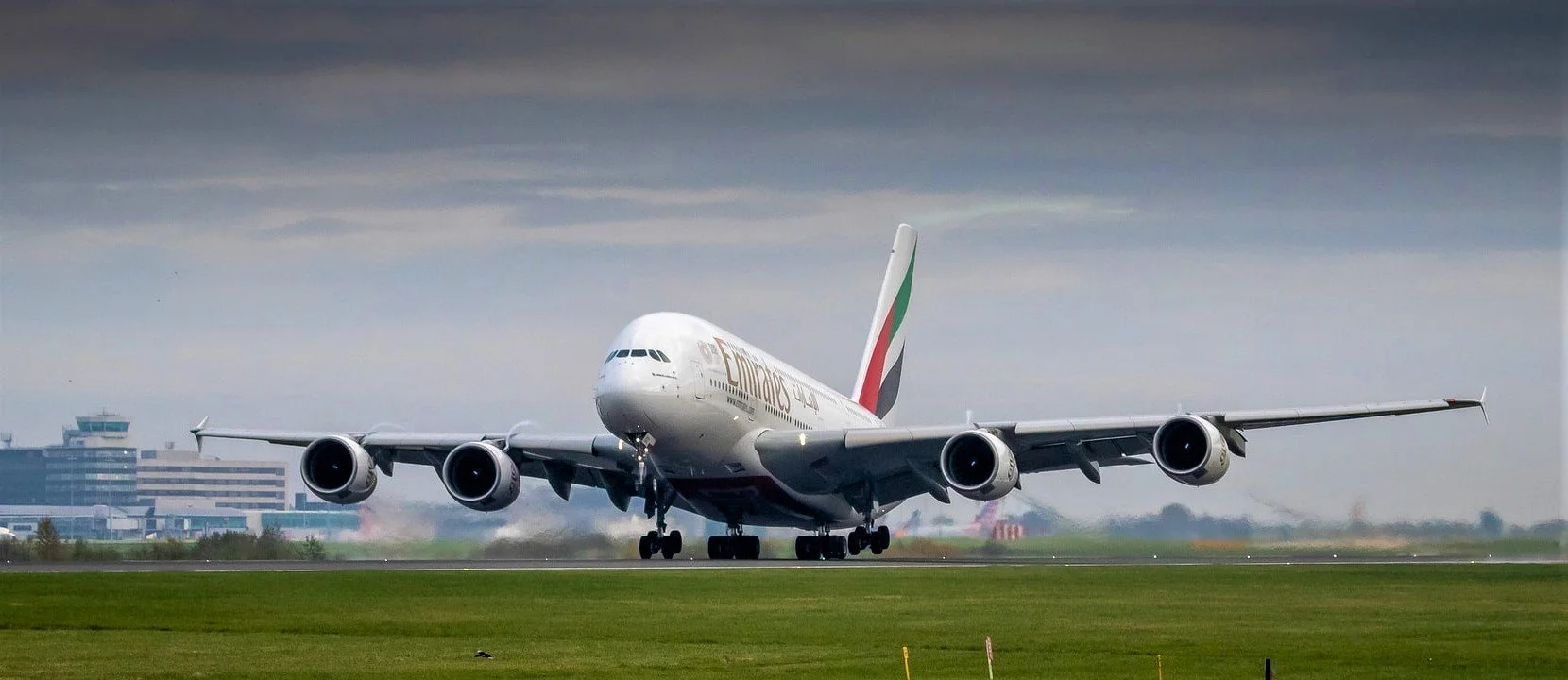Animals
Breaking the Mink Link
British Columbia (BC) is the first province in Canada to phase out mink farming (by 2025). Currently, there are COVID-19 outbreaks at three of BC’s nine mink farms that have infected both mink and workers. “This decision follows the recommendations of public health officials and infectious disease experts about managing the threat of the virus for workers at the farms and the broader public,” said BC’s minister of agriculture. Data from BC’s Centre for Disease Control identified the potential for the SARS-CoV-2 virus to mutate in mink and be passed back to humans. There are also concerns that mutations could impact the effectiveness of vaccines. The BC government pledged to help affected farmers and workers transition to other farm or job opportunities. Several countries such as Norway and France have already announced plans to end fur farming because of the threat of zoonotic diseases.
Food
Silver Linings
Palm oil is notorious for driving deforestation and destroying the habitats of orangutans. Now, a recent Worldwide Cancer Research study published in Nature says it may also fuel the spread of cancer by altering the DNA of tumors and making them more aggressive. The European Food Safety Authority and the World Health Organization have already declared palm oil to be more carcinogenic than any other oil. This new study found that palmitic acid, the main saturated fatty acid in palm oil, promotes mouth cancers and skin melanomas in mice. “This discovery is a huge breakthrough in our understanding of how diet and cancer are linked and, perhaps more importantly, how we can use this knowledge to start new cures for cancer,” said Dr. Helen Rippon, chief executive at Worldwide Cancer Research. Palm oil is used in a wide range of goods from food e.g., breads, margarine and chocolate spreads, to beauty products.
the Climate Crisis
Room For Improvement
Based on the copious amounts of commentary on what COP26 did, or did not, achieve, awarding it a “C-, needs to work harder,” seems appropriate. The output was not nearly enough to match the scale and urgency of the climate crisis, weighed down as it was by the COP requirement for the unanimous consent of nearly 200 countries, favouring incremental solutions rather than bold transformative action. Nevertheless, the leader of the landmark 2015 Paris Climate Agreement Christina Figueres is optimistic, particularly about the recognition that “nature is our greatest protector from the worst impacts of the climate crisis”, and the pledge by 100 countries to reverse deforestation by 2030. While language in the Glasgow agreement was watered down, she says COP26 marks a new focus on nature-based solutions and achieving the “necessary land use revolution this decade — from degeneration to regeneration” to keep the global warming target of 1.5C alive.
words of wisdom
“We are the last generation that still has a chance to force a course change that can save lives and species on a vast scale.”
— Jane Fonda, multiple Academy award-winning actor and lifelong activist
“No matter where you are or where you’re from, you can always find some line to spout about why you shouldn’t be responsible for this … [but] this moment is about leadership. It’s about stepping up. It’s about everybody figuring out what they can do and doing it.”
— Taryn Fransen, international climate policy expert, and senior fellow at the World Resources Institute
Photo: Kristoffer Trolle, Wikimedia
perspective
“Happy”. Photo: One Green Planet.
How We Think About Animals Drives Our Behaviour Toward Them
Maybe as early as next month, the New York Court of Appeals will hear oral arguments regarding a petition of habeas corpus that alleges that the detention of “Happy” (an elephant) is unlawful because under US law, she is a person. Captured and taken from her family in Thailand decades ago, Happy ended up in the Bronx Zoo in 1977. Today, she is in her 50s, retired from giving rides and performing tricks and living alone. She could live into her 70s.
This landmark case raises many questions about how animals are viewed by humans and the fraught relationship that endures between us. It very often comes down to the way we think of them, if we think of them at all.
It’s useful to remember there was a time when humans thought that the Earth was at the centre of the universe. Turns out our little planet is situated towards the edge of an unremarkable galaxy, the Milky Way, one among billions of galaxies scattered throughout the vastness of space.
We are slowly creeping towards the threshold of another revelation, that perhaps humankind needs to re-examine its presumptive superiority over other beings on the planet. The chart below shows our position in evolution – sitting on a branch among many others — not perched atop the tree as many of us imagine.
The customary way of holding ourselves up as some kind of gold standard against which to judge other species has deep roots in ancient times, and has been embedded in religions, cultures, and western philosophy passed down through the ages.
And it is this standard, by which we judge animals to be lesser versions of ourselves, that prevents us from acknowledging what science has now proven beyond all doubt: that animals are sentient, and possess intelligence, moral worth and rights. We are not the sole possessors of personhood.
An expert in animal behaviour and intelligence Dr. Lori Marino, is also a neuroscientist, author, and president of The Whale Sanctuary Project. In a presentation she gave recently to the Canadian Animal Law Conference she made the case for expanding the legal definition of personhood to include other animals.
Dr. Marino confirmed that it’s been scientifically proven that dolphins and great apes have “autonomy” in that they are unique individuals, with desires and a sense of self. They recognize themselves in mirrors — they know “that’s me” — a measure of a species’ self-awareness. They can mimic others, they can think about their own thoughts. They have intentionality and can understand causation. They understand the mental states of others and can empathize. They are capable of planning, they can travel mentally over time, they can plan a sequence of actions to reach a goal and they can delay gratification.
And yet human societies persist in treating these sentient beings as objects which makes it acceptable to deny them any agency or control over their lives — which flings the door wide open for use and abuse on a massive scale.
Elephants are also among the most intelligent, long-lived and sentient of animals. They grieve their dead, they protect their families, and appear to possess a theory of mind in that they understand themselves as individuals with thoughts that differ from others. And they suffer and understand suffering.
As we learn more about different types of intelligence, our deeply embedded attitudes will need to evolve. Humans are not the centre of life on Earth, any more than Earth is the centre of the universe. And surely Happy is a person in every way that matters. regardless of any human standard or court ruling.
deeper dive
Deforestation, the Climate and What We Eat
Planting a tree is an act of optimism — it’s for the future. And the role of trees as a potential climate saver by storing carbon, and deforestation as a climate destroyer were central to discussions at the COP26 Climate Summit. But if we’re having trouble seeing the forest for the trees in trying to figure out how forests can help resolve the climate crisis, it’s little wonder. In natural systems, everything is connected and it’s complicated. Here’s a high-level tour of the issues.
The good news from Glasgow is that 130 countries signed a declaration to halt and reverse forest loss and land degradation by 2030, covering more than 3.6 billion hectares of forest. The not-so-good news is that these initiatives have a poor track record. In 2016, 40 countries signed The New York Declaration of Forests, and deforestation has increased 40 per cent since then. And deforestation continues in Brazil despite promises by the Brazilian government. But this time there is more focus, commitment ($19.2 billion pledged in support) and scrutiny on the Glasgow agreement.
So what drives deforestation? The biggest culprit globally is agriculture — how and where we grow our food. A new study by the UN FAO (Global Remote Sensing Survey) shows that agricultural expansion is an even bigger problem than previously thought, driving almost 90 percent of global deforestation. Worldwide, more than 50% of forest loss is due to conversion of forest into cropland and livestock grazing is responsible for almost 40 percent.
“We have lost 420 million hectares of forest since 1990,” said FAO Director-General QU Dongyu. This is the equivalent of about 55% of the total area of the continental US.
While the vast majority of deforestation is happening in tropical biomes, agriculture remains the main driver of deforestation in all regions except for Europe. In Africa and Asia, 75% of the forest area lost was converted to cropland. In South America, almost three-quarters of deforestation is due to livestock grazing. So which agricultural sectors are responsible for the continuing rate of deforestation? The chart below from the World Resources Institute shows the crops and commodities that are replacing forests each year.
So, how do we stop food systems-related deforestation? There is good news in a new EU proposal to ban agricultural products linked to deforestation from the EU market of 450 million consumers. Under the draft law, companies would be required to prove that commodities such as beef, palm oil, soy, coffee, cocoa and wood are not linked to deforestation. This is the first time the EU will regulate products linked to all – and not just illegal – deforestation.
This example clearly demonstrates that deforestation is not just a developing world/global south issue. The EU plan to stop consumer demand in richer nations from driving deforestation in the developing world is also targeting less obvious connections. For example, 77% of global soy production, much of it tied to deforestation, is used for livestock feed. Soy from South America is exported to chicken and pig farms in richer nations.
How do we reverse the damage? Solutions range from citizen-led reforestation campaigns such as One Tree Planted (photos below) and Trees For Jane and new economic models that help local people in forested areas in Indonesia earn income without cutting down trees.
So, preserving forests are key to the climate fix equation due their ability to store carbon in both trees and forest soils and act as “the lungs of the earth.” But trees are not a “green pass” to carry on as we have before. And while citizen campaigns can make a difference, significant progress requires system-wide re-structuring to support more sustainable consumer choices, incentives for lower-carbon diets and the re-engineering of the industrial food system.
The latest study in Nature Food shows that global agriculture makes up 35% of human caused greenhouse gas emissions, 60% of which is caused by industrialized animal agriculture.
Experts at the World Resources Institute argue reforms must include stopping agriculture-related deforestation in all regions and reducing the expansion of the huge livestock and feed crop land footprint. They also argue that focusing on forests cannot be a reason to avoid reducing agriculture system emissions, especially from livestock production in richer nations. And we also need reforestation of biodiverse areas, including surplus or marginal agricultural land to help offset remaining food system emissions.
nurture nature
Long-eared owl chick. Photo: Ossi Saarinen www.instagram.com/soosseli
dark side of dairy
Images of people and farmed animals trapped by catastrophic flooding in British Columbia (BC) understandably grabbed headlines and showcased the fragility of lives, infrastructure and food systems. Another story that made far fewer headlines was footage of cows being kicked and beaten on a BC organic dairy farm earlier this year. The videos were turned over to the BC SPCA. In Canada, as in many countries, the vast majority of farmed animals are raised in intensive factory farm conditions and shielded from view. It’s now accepted they are capable of cognitive thought and experience pain and suffering, yet governments don’t regulate animal welfare on farms or inspect them. Animal advocates have called for third party auditing systems and adequate oversight for years but at least the National Farm Animal Care Council (made up mainly of industry stakeholders) have just released a draft of a new dairy cattle code for public comment.
Good news
We Could Just Put it Back the Way it Was
Animating the Carbon Cycle (ACC) is a research effort spearheaded by 60 scientists, economists, and a consortium of organizations, to demonstrate the massive impact nature-based solutions can have on stabilizing the climate. The goal is to supercharge our ecosystem carbon sinks to meet the 1.5C target.
Described as a “game changer” and a critical missing link between biodiversity and climate change, the initiative will document the scientific, economic, and practical potential of animating the carbon cycle, and identify ways to achieve it.
A great example of supercharging ecosystem carbon sinks is the restoration of wildebeest in the Serengeti, which has almost completely prevented wildfires. The rejuvenated grasslands now capture the same amount of carbon as the annual, human-caused CO2 emissions of Kenya and Tanzania combined.
Restoring wildlife populations in oceans is another opportunity. Restored whale populations could capture carbon equivalent to the annual emissions of Russia, and rebuilding depleted fish stocks which, even now, capture the carbon equivalent of twice the CO2 emissions of the EU-27, also offers huge potential.
By preserving still-intact nature, and urgently restoring and re-wilding functional ecosystems, ACC is seen as a highly cost-efficient, nature-based solution that will allow nature to prosper, manage carbon, save species, and support stewards of intact areas such as indigenous peoples and local communities.
For People Who Want to Talk About It
“If we wait for hope, we’ll never find it. If we wait for someone else to fix the problem, we’ll never solve it. But when we go out and look for hope, when we take action together, when we raise our voices to call for change – that’s when we find that hope is all around us.”
— Climate scientist, Katharine Hayhoe
Finding it challenging to talk to your co-workers or your “angry uncle” about the climate crisis? A new book by leading climate scientist and acclaimed communicator Katharine Hayhoe can help.
In “Saving Us: A Climate Scientist’s Case for Hope and Healing in a Divided World”, the Canadian scientist out of Texas Tech University shares her formula for influencing people to take action, complete with examples of what works and what doesn’t.
Hayhoe, who is also a United Nations Champion of the Earth, emphasizes that when it comes to changing hearts and minds, facts will only take you so far. She argues that finding common ground with those with whom you disagree is the basis for a constructive conversation, to open up people’s minds and encourage collective action.
The book has had enthusiastic reviews: “One of the more important books about climate change to have been written,” says The Guardian. “An optimistic view on why collective action is still possible — and how it can be realized,” says The New York Times.
And Hayhoe’s 2018 TED Talk “The Most Important Thing You Can Do To Fight Climate Change: Talk About It” has been watched nearly four million times.
Look, No Cow
Animal-free dairy company, Perfect Day, recently announced two big scoops (hold the cone).
They’ve signed up to test their dairy-identical milk at Starbucks coffee shops in Seattle and teamed up with General Mills’ Bold Cultr to produce a lactose-free cream cheese. Both products are made with Perfect Day’s dairy proteins made via microbial fermentation, not cows.
Perfect Day, a start-up valued at $1.6 billion, says it has invented the world’s first milk protein made without animals. They use precision fermentation to produce whey and casein to make dairy products ranging from milk to ice cream, with the same taste, texture, and nutrition as traditional dairy but without the downsides of factory farming, lactose, hormones, or antibiotics. The company is revolutionizing the traditional dairy business and continues to attract new partners and customers.
Data Points
50% of aviation emissions are caused by 1% of the world’s population. And 80% of people have never flown.
100 companies are responsible for approximately 70% of GHGs but it doesn’t get us off the hook because we buy what they sell! Making things last longer and buying less would help.
To reach 1.5C, the world needs to reduce emissions to an average of 2.3 tonnes per person per year by 2030. For context, Canadians rank fifth in emissions per capita, producing an annual average of 14 tonnes of CO2. Oh, and in case you were wondering, an 11-minute space flight emits 75 tonnes.
Global carbon capture is a highly-touted solution to the climate crisis but, not so fast. According to The International Energy Agency it only captured 40 megatonnes in 2020 — or 0.13% of the 30,000 mgs emitted that year.
Animals are pathetic bioreactors. Only 11% of what is fed to a chicken is converted into human food and cows only convert 3-4%. Never mind all the other issues attached to industrial animal agriculture, it’s a massively inefficient use of planetary resources!
Do Meatless Mondays make a difference? Apart from the benefits to human health, animal advocacy non-profit Animal Outlook, says it saves 28 land animals a year. And a study from the University of Michigan and Tulane University, says that on average, 56% of the carbon footprint of US diets comes from meat, 45% of which comes from beef. And reducing the consumption of animal foods by 50% is equal to reducing the annual emissions from 47.5 million cars.
charting our path
Source: Canada’s Greenhouse Gas Inventory
Agricultural emissions are difficult to measure mainly because of the complexity of its different systems and different accounting methods. What is included? What is left out? The above chart provides a simple breakdown of emissions from Canada’s agriculture sector, which are 10% of all human-caused GHG emissions in Canada.
Livestock is a big contributor, especially of the powerful GHGs, methane and nitrous oxide, 80-300x more powerful than CO2, although shorter-lived. Enteric fermentation is the largest source of GHGs mainly due to methane from the digestive systems of cattle and sheep. Manure is a significant source of methane and nitrous oxide. And while soil does capture some carbon, it’s a significant source of GHGs due to nitrogen based chemical fertilizers and manure fertilizer, much of which is used to grow feed crops for livestock.
riveting reads
1. Cutting methane emissions is key to addressing the climate crisis so why is the US (and most other nations) ignoring the #1 source of this powerful greenhouse gas (Politico)?
The Cow-Shaped Hole in Biden's Methane Plan
2. The defenders of conventional meat have managed to cast doubt on whether plant-based meat is a better option for the climate. This story highlights the scientific evidence that says it is (Vox).
Yes, plant-based meat is better for fighting climate change
3. A recent survey of citizens in 10 countries uncovered some revealing information about what people were prepared to do and why, to stave off the climate crisis (The Guardian).
Few willing to change lifestyle to save the planet, climate survey finds
4. The death of thousands of farmed animals in the flooding in British Columbia highlights the irony of a food system impacted by the very crisis it is helping create (The Globe and Mail).
Drowned animals are more collateral in a flawed farming system
5. Therapists are grappling with how to address our anxieties about climate change (New York Magazine).


